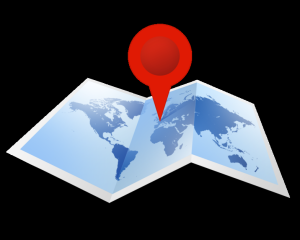
GPS fleet tracking systems can do many things to your business. Rather than employing a manager to just sit in the vehicle’s passenger seat and keep an eye on the drivers and vehicles while on the road, you can keep track of your fleet from wherever you are through a GPS powered fleet-tracking software. With a GPS fleet tracking system, your businesses can determine whether the vehicles are properly operated and whether they are at their optimum condition or not. The drivers, also, are being monitored for safety purposes.
Similar to other GPS software, GPS fleet tracking systems locates vehicles, establish routes, and provide directions to any assigned destination. However, additional features allow the system to better assist your fleet with tracking vehicle conditions, which includes monitoring mileage and fuel consumption as well as identifying equipment and maintenance issues. All these are essential in reducing your operational cost.
How to Use a GPS fleet tracking system
A GPS fleet-tracking software operates through the fragment of GPS hardware that is installed inside the vehicle. The software uses the global positioning systems through satellites to keep track of drivers and vehicles in real time. The system enables users to access real-time alerts and updates using the data that are sent straight to the software operator from the vehicle.
Selecting GPS fleet-tracking software
When it comes to selecting a system that is fit for your business, you have to make sure first that it includes certain features that you need.
Almost all fleet management systems offer different standard features without any extra cost. They normally include:
-
Dashboards with trending on-key measurement
-
Fuel card integration
-
Reliable customer support
-
Navigation and communication option:
Other major features you need to look for:
User friendly— Technologies can be very complicated, especially software, it is important to select one with a simple dashboard that doesn’t require technical skills or much of a learning curve to use. Many vendors provide in-person or virtual demos, so try one first before making a commitment.
Alert systems— Notifications via text and email when something isn’t right with vehicles and drivers. Moreover, it is best to select a provider that will enable you to set alerts for certain occurrences like when the driver is engaging in unsafe driving conducts or has gone off the route.
Mobile capability—Not all available GPS fleet-tracking software have a mobile Web version or can be accessed through mobile apps. If you want easy access to the software anytime and anywhere, choose one that is cloud-based or that it has an app available for your specific device.
Good signal— It is essential for a GPS software to have a strong signal, otherwise it’s no good. Make sure that the vendor you select will continue the connectivity even outside the city, or remote places including parking garages and tunnels.
Customer support— Choose a provider that enables you talk to a real person in real-time whenever you need assistance whether it be live chat or phone. There are other types of help available including email support, help-desk ticket systems, documentation, as well as how-to videos.
Integration with third party. This feature can save you tons of time through automatic syncing of your data into payroll, accounting, time attendance, along with other associated software.
Although it is important that the software you choose fits into your allocated budget, you should not select your fleet tracking systems based only on the price.